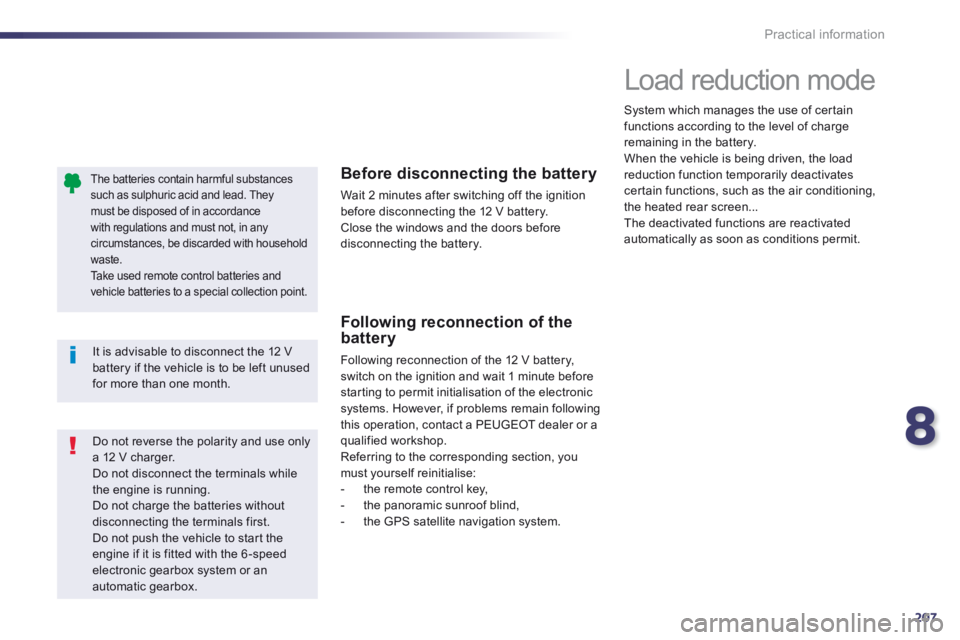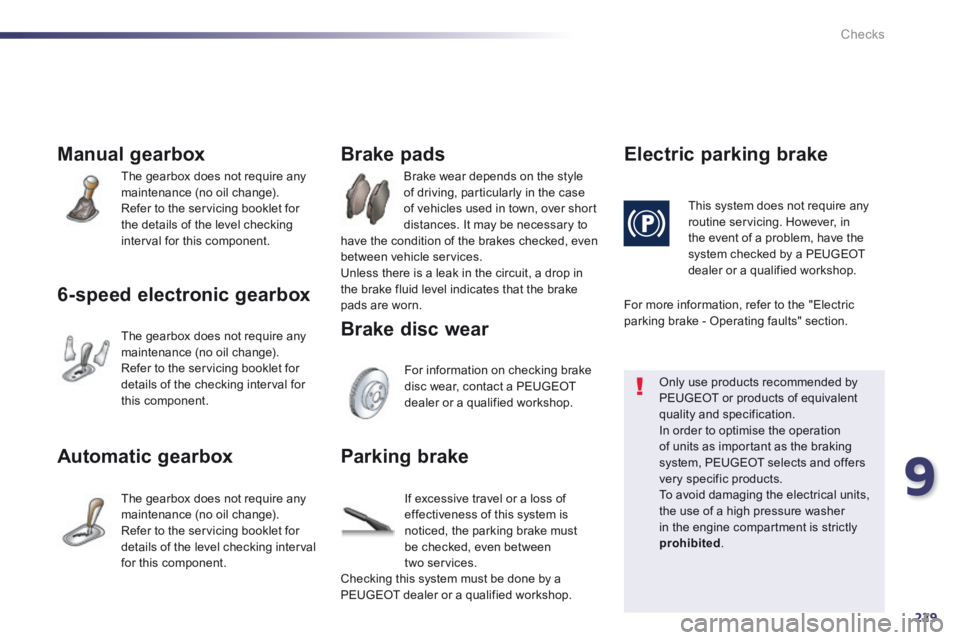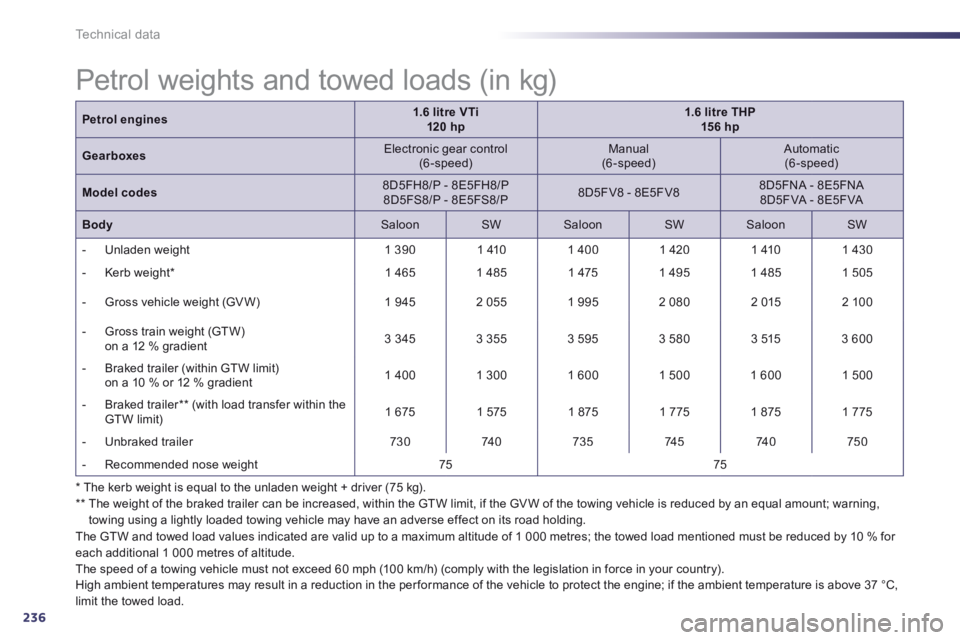2014 Peugeot 508 gearbox
[x] Cancel search: gearboxPage 137 of 352

4
135
Driving
Operation
When you have identified a parking space: Engage a gear on a manual gearbox or put the gear lever in position A (electronic gear control gearbox) or in position D (automatic gearbox). Press button A to start the system. Operate the direction indicator on the side where the space is to be measured; a message is displayed and the warning lamp flashes to confirm that measurement is in progress. During measurement, go for ward the length of the space, at a speed less than 12 mph (20 km/h), to prepare for your manoeuvre. Once the measurement has been completed, the system informs you of the level of difficulty of the manoeuvre by a message in the multifunction screen accompanied by an audible signal.
The system displays one of the following messages:
Parking possible
Parking difficult
Parking not advised
If the lateral distance between your vehicle and the parking space is too great, the system may not be able to measure the space.
The system remains available after each measurement and can therefore measure several spaces in succession.
In poor or wintry weather, ensure that the sensors are free of dirt, ice or snow. The parking space sensor system deactivates the front parking sensors when measuring forwards. If there is a fault, have the system checked by a PEUGEOT dealer or a
qualified workshop.
The system switches itself off automatically: - when you engage reverse gear, - when you switch off the ignition, - if measuring is not requested, - within five minutes of switching on the system, - if the vehicle speed exceeds the threshold of 45 mph (70 km/h) for one minute.
Page 190 of 352

188
Practical information
Place the foot of the jack 2 on the ground and ensure that it is directly below the front A or rear B jacking point provided on the underbody, whichever is closest to the wheel to be changed.
Removing a wheel
Parking the vehicle
Immobilise the vehicle where it does not block traffic: the ground must be level, stable and not slippery. Apply the parking brake unless it has been programmed to automatic mode, switch off the ignition and engage first gear * to block the wheels. Check that the braking warning lamp and the P warning lamp in the parking brake control lever come on. The occupants must get out of the vehicle and wait where they are safe. Never go underneath a vehicle raised using a jack; use an axle stand.
List of operations
Remove the bolt cover from each of the bolts using the tool 3 (according to equipment). Fit the security socket 4 on the wheelbrace 1 to slacken the security bolt (if fitted). Slacken the other bolts using the wheelbrace 1 o n l y.
* Position R for the electronic gear control gearbox; P for the automatic gearbox.
Page 209 of 352

8
207
Practical information
The batteries contain harmful substances such as sulphuric acid and lead. They must be disposed of in accordance with regulations and must not, in any circumstances, be discarded with household waste. Take used remote control batteries and vehicle batteries to a special collection point.
Do not reverse the polarity and use only a 12 V charger. Do not disconnect the terminals while the engine is running. Do not charge the batteries without disconnecting the terminals first. Do not push the vehicle to start the engine if it is fitted with the 6 -speed electronic gearbox system or an
automatic gearbox.
It is advisable to disconnect the 12 V battery if the vehicle is to be left unused for more than one month.
Before disconnecting the battery
Wait 2 minutes after switching off the ignition before disconnecting the 12 V battery.
Close the windows and the doors before disconnecting the battery.
Following reconnection of the battery
Following reconnection of the 12 V battery, switch on the ignition and wait 1 minute before starting to permit initialisation of the electronic systems. However, if problems remain following this operation, contact a PEUGEOT dealer or a qualified workshop. Referring to the corresponding section, you must yourself reinitialise: - the remote control key, - the panoramic sunroof blind, - the GPS satellite navigation system.
Load reduction mode
System which manages the use of certain functions according to the level of charge remaining in the battery. When the vehicle is being driven, the load reduction function temporarily deactivates certain functions, such as the air conditioning, the heated rear screen... The deactivated functions are reactivated automatically as soon as conditions permit.
Page 212 of 352

210
Practical information
Towing the vehicle Procedure for having your vehicle towed or for towing another vehicle using a removable towing eye.
Towing from the front Access to the tools
The towing eye is installed in the boot under the floor. To gain access to it: open the boot, position the floor vertically, remove the towing eye.
On the front bumper, unclip the cover by pressing at the bottom. Screw the towing eye in fully. Install the towing bar. Switch on the hazard warning lamps on the towed vehicle.
Place the gear lever in neutral (position N on the electronic gear control gearbox or automatic gearbox). Failure to observe this special condition could result in damage to certain braking components and the absence of braking assistance the next time the engine is started.
Page 213 of 352

8
211
Practical information
General
recommendations
Observe the legislation in force in your c o unt r y. Ensure that the weight of the towing vehicle is higher than that of the towed vehicle. The person at the wheel of the towed vehicle must have a valid driving
licence. When towing a vehicle with all four wheels on the ground, always use an approved towing bar; rope and straps are prohibited. When towing a vehicle with the engine off, there is no longer any power assistance for braking or steering. In the following cases, you must always call on a professional recovery service: - vehicle broken down on a motor way or fast road, - 4 wheel drive vehicle, - when it is not possible to put the gearbox into neutral, unlock the steering, or release the parking brake, - towing with only two wheels on the ground, - where there is no approved towing bar available...
Towing from the rear
On the rear bumper, unclip the cover by pressing at the bottom. Screw the towing eye in fully. Install the towing bar. Switch on the hazard warning lamps on the towed vehicle.
Page 231 of 352

9
229
Checks
Manual gearbox
The gearbox does not require any maintenance (no oil change). Refer to the servicing booklet for the details of the level checking interval for this component.
6-speed electronic gearbox
The gearbox does not require any maintenance (no oil change). Refer to the servicing booklet for details of the checking interval for this component.
Automatic gearbox
The gearbox does not require any maintenance (no oil change). Refer to the servicing booklet for
details of the level checking interval for this component.
Brake wear depends on the style of driving, particularly in the case of vehicles used in town, over short distances. It may be necessary to have the condition of the brakes checked, even between vehicle services. Unless there is a leak in the circuit, a drop in the brake fluid level indicates that the brake pads are worn.
Brake pads
For information on checking brake disc wear, contact a PEUGEOT dealer or a qualified workshop.
Brake disc wear
Electric parking brake
This system does not require any routine servicing. However, in the event of a problem, have the system checked by a PEUGEOT dealer or a qualified workshop.
Only use products recommended by PEUGEOT or products of equivalent quality and specification.
In order to optimise the operation of units as important as the braking system, PEUGEOT selects and offers very specific products. To avoid damaging the electrical units, the use of a high pressure washer in the engine compartment is strictly prohibited .
Parking brake
If excessive travel or a loss of effectiveness of this system is noticed, the parking brake must
be checked, even between two services. Checking this system must be done by a PEUGEOT dealer or a qualified workshop.
For more information, refer to the "Electric parking brake - Operating faults" section.
Page 237 of 352

10
235
Technical data
Petrol engines1.6 litre VTi 120 hp1.6 litre THP 15 6 hp1.6 litre THP 160 hp
Gearboxes Electronic gear control (6-speed) Manual (6-speed) Automatic (6-speed) Manual (6-speed)
Model codes 8D5FH8/P - 8E5FH8/P 8D5FS8/P - 8E5FS8/P 8D5FV8 - 8E5FV8 8D5FNA - 8E5FNA 8D5FVA - 8E5FVA -
Cubic capacity (cc) 1 598 1 598 1 598
Bore x stroke (mm) 77 x 85.8 77 x 85.8 77 x 85.8
Max power: EU standard (kW) 85 88 11 0 115 -
Max power engine speed (rpm) 6 000 6 000 -
Max torque: EU standard (Nm) 160 240 -
Max torque engine speed (rpm) 4 250 1 400 -
Fuel Unleaded Unleaded Unleaded
Catalytic converter yes yes yes
Oil capacities (in litres)
Engine (with filter replacement) 4.25 4.25 4.25
Petrol engines and gearboxes
Page 238 of 352

236
Technical data
* The kerb weight is equal to the unladen weight + driver (75 kg). ** The weight of the braked trailer can be increased, within the GTW limit, if the GV W of the towing vehicle is reduced by an equal amount; warning, towing using a lightly loaded towing vehicle may have an adverse effect on its road holding.
Petrol weights and towed loads (in kg)
The GTW and towed load values indicated are valid up to a maximum altitude of 1 000 metres; the towed load mentioned must be reduced by 10 % for each additional 1 000 metres of altitude. The speed of a towing vehicle must not exceed 60 mph (100 km/h) (comply with the legislation in force in your country). High ambient temperatures may result in a reduction in the per formance of the vehicle to protect the engine; if the ambient temperature is above 37 °C, limit the towed load.
Petrol engines1.6 litre VTi 120 hp1.6 litre THP 15 6 hp
Gearboxes Electronic gear control (6-speed) Manual (6-speed) Automatic (6-speed)
Model codes 8D5FH8/P - 8E5FH8/P 8D5FS8/P - 8E5FS8/P 8D5FV8 - 8E5FV8 8D5FNA - 8E5FNA 8D5FVA - 8E5FVA
Body Saloon SW Saloon SW Saloon SW
- Unladen weight 1 390 1 410 1 400 1 420 1 410 1 430
- Kerb weight * 1 465 1 485 1 475 1 495 1 485 1 505
- Gross vehicle weight (GV W) 1 945 2 055 1 995 2 080 2 015 2 100
- Gross train weight (GTW) on a 12 % gradient 3 345 3 355 3 595 3 580 3 515 3 600
- Braked trailer (within GTW limit) on a 10 % or 12 % gradient 1 400 1 300 1 600 1 500 1 600 1 500
- Braked trailer ** (with load transfer within the GTW limit) 1 675 1 575 1 875 1 775 1 875 1 775
- Unbraked trailer 730 74 0 735 74 5 74 0 750
- Recommended nose weight 75 75